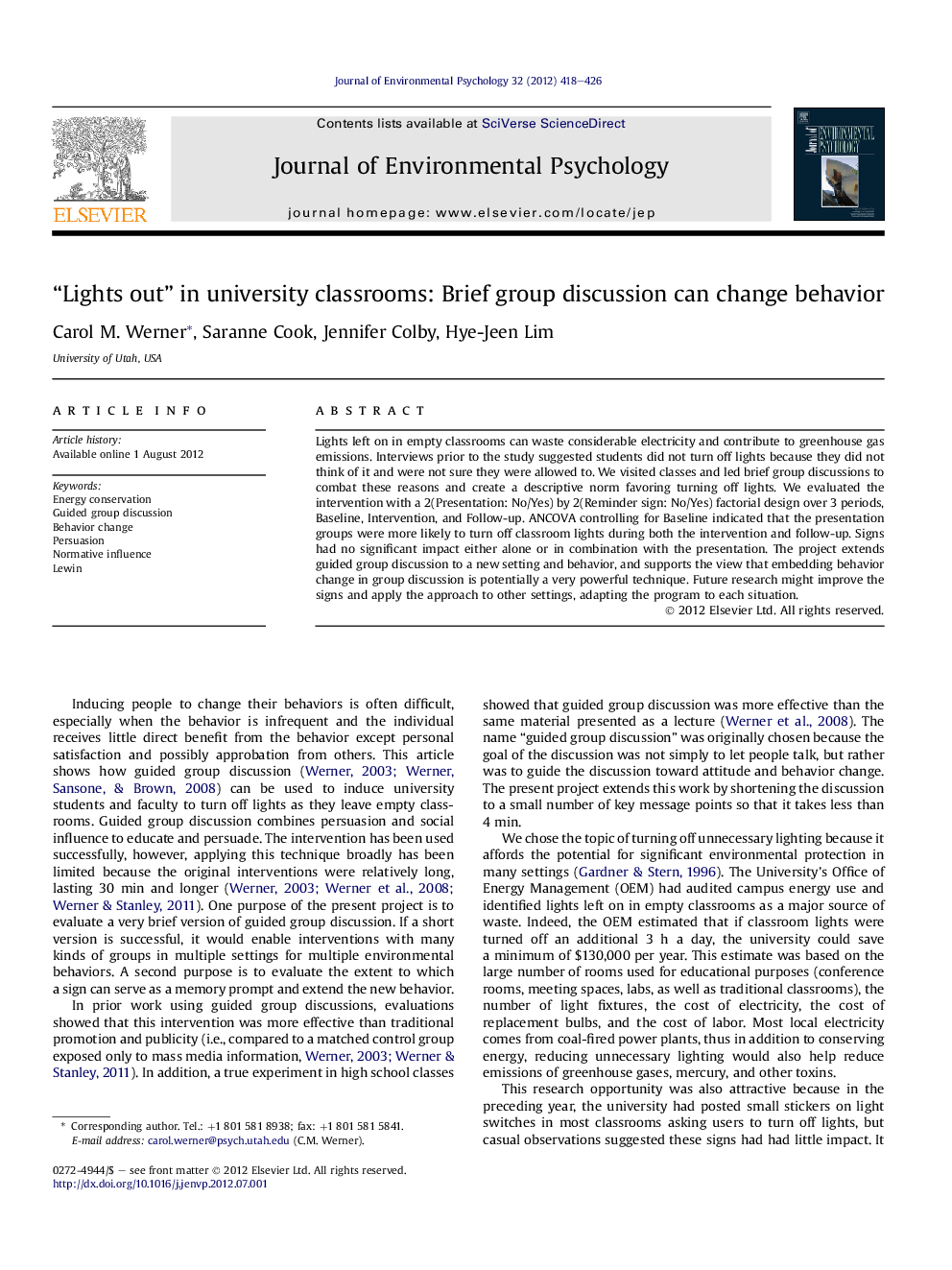| Article ID | Journal | Published Year | Pages | File Type |
|---|---|---|---|---|
| 885626 | Journal of Environmental Psychology | 2012 | 9 Pages |
Lights left on in empty classrooms can waste considerable electricity and contribute to greenhouse gas emissions. Interviews prior to the study suggested students did not turn off lights because they did not think of it and were not sure they were allowed to. We visited classes and led brief group discussions to combat these reasons and create a descriptive norm favoring turning off lights. We evaluated the intervention with a 2(Presentation: No/Yes) by 2(Reminder sign: No/Yes) factorial design over 3 periods, Baseline, Intervention, and Follow-up. ANCOVA controlling for Baseline indicated that the presentation groups were more likely to turn off classroom lights during both the intervention and follow-up. Signs had no significant impact either alone or in combination with the presentation. The project extends guided group discussion to a new setting and behavior, and supports the view that embedding behavior change in group discussion is potentially a very powerful technique. Future research might improve the signs and apply the approach to other settings, adapting the program to each situation.
► We evaluated a 4-min intervention for inducing students to turn off classroom lights. ► Brief discussions emphasized persuasive reasons and normative support. ► Presentations successfully increased lights out behavior for 5 weeks. ► When properly done, 4-min discussions can successfully change behavior.
